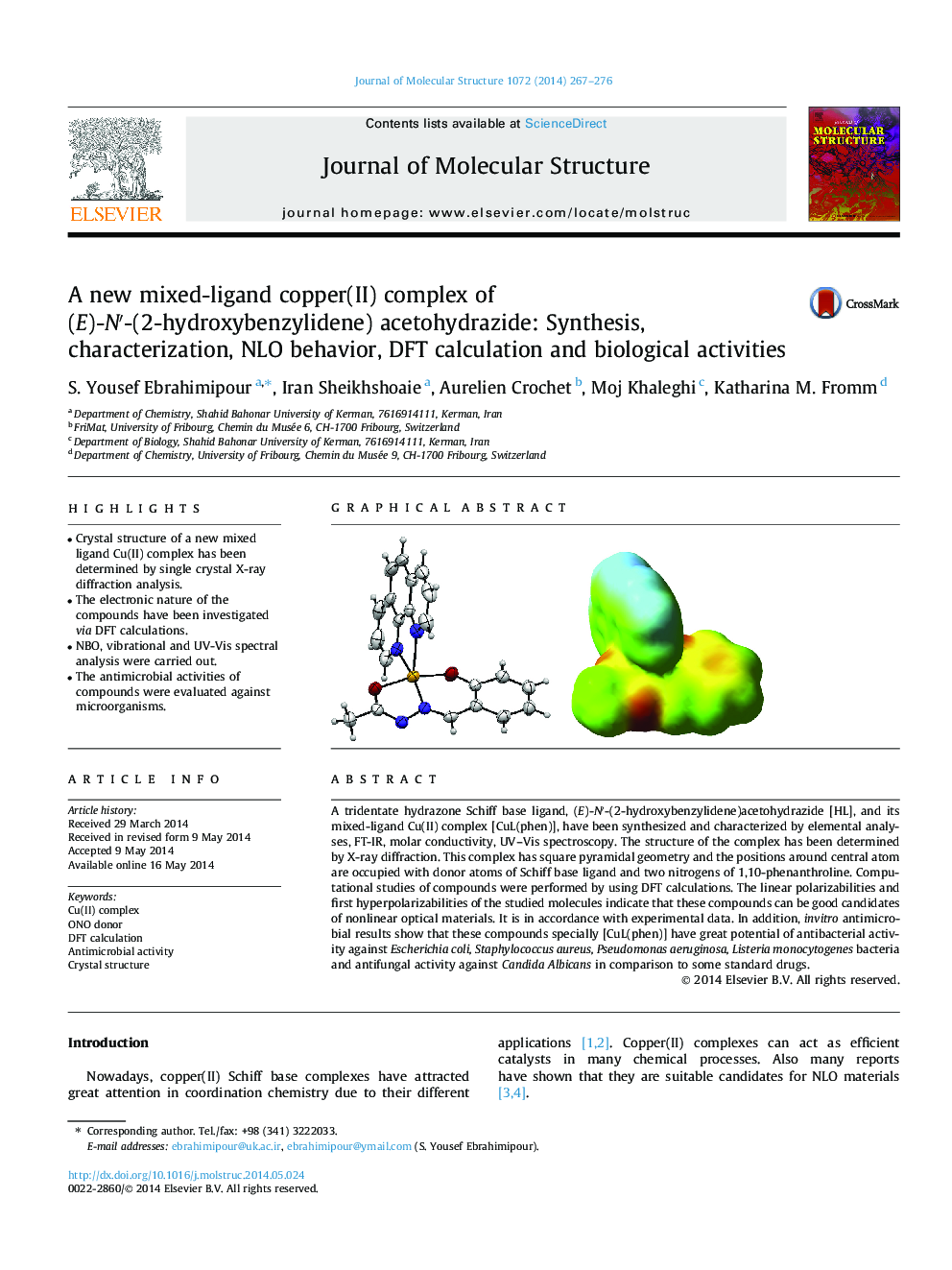| Article ID | Journal | Published Year | Pages | File Type |
|---|---|---|---|---|
| 1405051 | Journal of Molecular Structure | 2014 | 10 Pages |
•Crystal structure of a new mixed ligand Cu(II) complex has been determined by single crystal X-ray diffraction analysis.•The electronic nature of the compounds have been investigated via DFT calculations.•NBO, vibrational and UV-Vis spectral analysis were carried out.•The antimicrobial activities of compounds were evaluated against microorganisms.
A tridentate hydrazone Schiff base ligand, (E)-N′-(2-hydroxybenzylidene)acetohydrazide [HL], and its mixed-ligand Cu(II) complex [CuL(phen)], have been synthesized and characterized by elemental analyses, FT-IR, molar conductivity, UV–Vis spectroscopy. The structure of the complex has been determined by X-ray diffraction. This complex has square pyramidal geometry and the positions around central atom are occupied with donor atoms of Schiff base ligand and two nitrogens of 1,10-phenanthroline. Computational studies of compounds were performed by using DFT calculations. The linear polarizabilities and first hyperpolarizabilities of the studied molecules indicate that these compounds can be good candidates of nonlinear optical materials. It is in accordance with experimental data. In addition, invitro antimicrobial results show that these compounds specially [CuL(phen)] have great potential of antibacterial activity against Escherichia coli, Staphylococcus aureus, Pseudomonas aeruginosa, Listeria monocytogenes bacteria and antifungal activity against Candida Albicans in comparison to some standard drugs.
Graphical abstractFigure optionsDownload full-size imageDownload as PowerPoint slide
